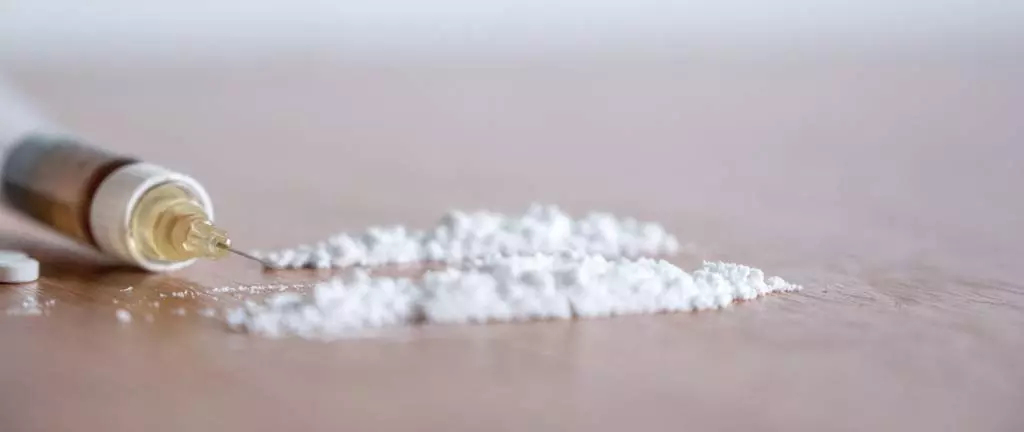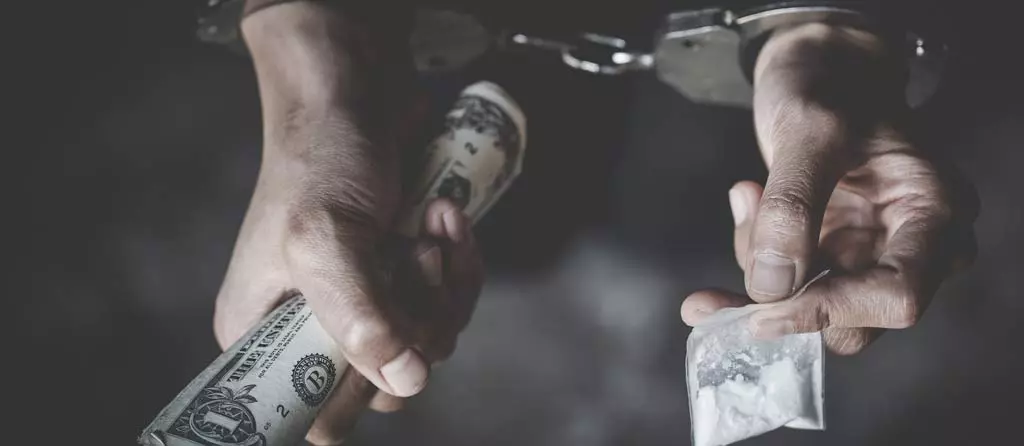The Signs of Withdrawal from Fentanyl
Table of Contents
Fentanyl is an addictive substance that many people use for the euphoric effects it produces. Unfortunately, not many people are aware of how easy it is to get a fentanyl addiction. Here, we explore fentanyl in detail. Read on if you want to learn more about this substance and how you or a loved one can seek recovery for fentanyl withdrawal symptoms.
What is fentanyl?
Fentanyl is a powerful opioid, 50 to 100 times more potent than morphine. It’s used to treat severe pain, often in end-of-life scenarios. Fentanyl is also used as part of anaesthesia to manage pain. As the use of fentanyl has increased, so has the number of overdoses tied to it and other opioids (which includes illicit drugs like heroin).
In 2017, there were 42,249 overdose deaths involving synthetic opioids other than methadone, including fentanyl and other opioids. The 42,249 deaths represent an increase of 33% over 2016; there were 72,000 drug overdose deaths in total that year.
24 Hour Fentanyl Rehab – Get Help Now!
Drug abuse and the dangers of fentanyl addiction
Fentanyl carries many risks. It can be absorbed through the skin, accidentally inhaled through breathing or swallowing it, or even absorbed through mucous membranes such as the eyes and nose. There is also a high potential for abuse and addiction because of its euphoric effects and rapid onset of action when taken in high doses.
What are the signs and symptoms of fentanyl abuse?
When people use fentanyl regularly over time, they may need higher doses to achieve the same effects as when they first began using it. This condition is called tolerance, and it means your body has become accustomed to the drug, so you need more of it to achieve the same effects as before.
There are many signs of drug use and abuse, which can sometimes be difficult to recognize. Some of the common signs of drug abuse include:
- Bloodshot eyes
- Frequent nosebleeds or runny nose
- Inability to concentrate or pay attention
- Trouble sleeping (insomnia)
- Slurred speech
- Poor balance and coordination;
- Lack of coordination between mental processes/thinking and speech.
- Weight loss or gain
- Appetite loss or gain
- Nausea, vomiting, or diarrhea
What does an opioid use disorder do to the human body?
When a person uses opioids for a long period of time, it can cause negative changes to their brain and body. These changes are called substance use disorders. The use of opioids can lead to a variety of effects on the human body. These effects vary depending on the drug used, how often it is used, and the condition of the user’s health overall. a whole range of health issues and physical symptoms, including:
- Chronic pain
- Problems with breathing
- Lung disease
- Infections of the heart lining and valves (endocarditis)
- Seizures
The consequences for your life with opioid addiction
Social Effects of Opioid Dependence
The consequences of addiction are not limited to the individual. Family and loved ones are often affected by a loved one’s substance use disorder. Your social life will likely change as a result of your fentanyl use. You may find it harder to hold down a job or maintain friendships because of the time spent using or dealing drugs. You may also find that you’re no longer able to maintain relationships because of the negative effects of using fentanyl and other drugs.
Fentanyl addiction can also have an impact on your personal relationships. If you have a partner or family member who is concerned about your drug use, they may be more distant from you or upset by your behavior while under the influence of drugs. They may also feel like they’ve lost control over their own lives because they can’t stop you from doing whatever you want — even if it puts them at risk for harm or injury.
Financial Effects of Fentanyl Use
The most obvious financial consequence of having an uncontrolled fentanyl addiction is the cost of the drug itself. Fentanyl can be purchased on the street for as little as $2 per dose or as much as $50, depending on the quality and availability of the drug. The cost can quickly add up if you are using fentanyl frequently. It’s possible for persons struggling with substance abuse to go through thousands of dollars each month on this drug alone, especially if they’re not working or paying bills while they’re addicted.
In addition to these direct costs, there are indirect costs associated with fentanyl addiction and abuse that are more difficult to quantify but no less real. These include the cost of lost productivity due to work absences or declining performance due to impaired cognitive functioning.
Legal Consequences for Opioid Use
If you have been charged with a drug-related crime, the stakes will be high for you. The penalties for drug possession and trafficking can include jail time, fines, and even probation. You may also be required to undergo mandatory treatment or rehabilitation programs if you are convicted of a felony charge.
The severity of the charges depends on the type and amount of drugs involved in the case. For example, if you are caught with small amounts of cocaine or heroin, you might be charged with simple possession instead of intent to sell or distribute. If you have large quantities of illegal substances in your possession or if there is evidence that you plan to sell them, then you could face more serious charges such as intent to distribute or manufacture drugs.
24 Hour Treatment for Fentanyl!
What are the risk factors for fentanyl addiction and other opioids?
There are various components that can influence a person’s risk factors for fentanyl addiction. Risk factors are essentially anything that results in a person being predisposed or at higher risk of falling into substance abuse habits.
Co-occurring disorders
Mental disorders are a risk factor for fentanyl addiction, according to the National Institute on Drug Abuse. Mental illness, especially depression, anxiety disorders, post-traumatic stress disorder (PTSD), and schizophrenia are associated with higher rates of substance abuse. Substance use may help people cope with symptoms of mental health issues or mask the signs of a mental health disorder.
A person who has experienced trauma may be at greater risk for developing PTSD. This condition is characterized by anxiety, hypervigilance, numbing, detachment from others, nightmares, or flashbacks related to the traumatic event(s). People may engage in self-destructive behaviors such as substance abuse or self-injury in an attempt to self-medicate and cope with these symptoms.
Genetics and Fentanyl Addiction
The opioid epidemic is a complex problem, but there is an increasing body of evidence that genetics plays a significant role in the development of substance abuse disorders. Research has shown that people with a family history of substance abuse are more likely to develop a substance use disorder themselves. This is because genetics, or the inherited traits we get from our parents, can make us more susceptible to developing certain diseases.
Environmental Effects in Developing Opioid Dependence
The nature of those around you, as well as the environment within which you exist all have an impact on whether or not you are more at risk of developing a fentanyl addiction. If your social circles consist of people struggling with substance abuse or engaging in the habit habitually, you are more likely to fall prey to the habit yourself as well. Statistically, persons in lower-income communities are more at risk of struggling with substance abuse disorders than those in comparatively more affluent areas.
The difficulty of fentanyl withdrawal symptoms
Opioids cause a surge in dopamine (a chemical messenger) in the brain’s reward circuits, thus creating the illusion of pleasure or euphoria. This surge, called euphoria, reinforces drug-taking behavior. Eventually, your body loses its ability to produce natural opioids and begins to rely on exogenous (external) opioids like heroin or fentanyl. Then, even if you stop using opioids, your body continues to crave them — leading to severe withdrawal symptoms when you don’t have access to them.
The withdrawal symptoms of fentanyl addiction are similar to those of other opiates, such as heroin and prescription painkillers. Fentanyl is a synthetic opioid that works on the body in the same way as heroin or morphine.
Fentanyl withdrawal symptoms tend to begin within hours after discontinuing the use of the drug and can last up to three weeks. The symptoms are similar to those found in other opiate withdrawals and include:
- Anxiety
- Insomnia
- Sweating
- Abdominal cramps and diarrhea
- Diarrhea or constipation
- Nausea and vomiting
- Fever or chills
How medical detox helps with fentanyl withdrawal symptoms
The withdrawal phase is a very important part of substance abuse treatment. It can be especially difficult for people addicted to fentanyl, as they may experience symptoms that could be life-threatening. The severity of opioid withdrawal symptoms when one quits cold turkey can often result in the person running back to fentanyl use.
A good medically assisted detox program from a reputable treatment center such as Emerald Isle is key. These programs are conducted by professional healthcare providers and can work wonders to prevent relapse in persons struggling with opioid use.
Medications are available that can help ease withdrawal symptoms and make it easier for you to detox. The most commonly used medication is buprenorphine, which can be prescribed by your doctor and used in combination with other medications, such as methadone or naltrexone. These medications help stabilize your body’s chemistry so that you don’t experience the painful symptoms of withdrawal.
What is a fentanyl rehab like?
Fentanyl addiction treatment consists, generally, of three major components with a great many variations among them. This is because there’s quite a wide ambit of addiction treatment options. The truth is that addiction treatment is an individualized thing generally that varies from person to person depending on their addiction and their needs.
Inpatient Addiction Treatment
Inpatient treatment for fentanyl addiction is the most effective way to overcome the physical, mental and emotional symptoms of withdrawal. This type of treatment program allows you to stay in a safe environment for an extended period of time, typically 28 days or longer. During this time, you will be able to receive around-the-clock care from medical professionals who specialize in substance abuse disorders.
Outpatient Treatment for Opioids
While most people are familiar with inpatient addiction treatment, there are also effective outpatient programs available for those who can’t afford it or don’t need to spend time away from home or work. Outpatient programs can include intensive outpatient treatment (IOP) and partial hospitalization (PH).
Outpatient care may be better suited for many patients who wish to continue working or attending school while receiving treatment. For those who need more intensive care than an outpatient program can provide, short-term residential care may be helpful during periods when relapse risk is highest. Also of note, outpatient programs are less expensive than inpatient ones since they don’t require staying overnight at a treatment center.
Medical Detox for Fentanyl
We’ve already discussed the benefits of medical detox for fentanyl addiction. For most addiction treatment programs, no further progress can be made until the body has gone through the withdrawal phase.
The risk of relapse is lowered due to a lack of withdrawal symptoms. This helps patients stay motivated throughout their treatment program so they can make it through without relapsing after treatment ends.
Therapies Used in Addiction Treatment
There are several types of therapy used in rehabilitation programs. The best approach is determined by the individual’s unique needs and circumstances.
Behavioral therapy
This form of therapy helps patients change their behaviors by rewarding positive actions and encouraging them to avoid high-risk situations where they may be tempted to use drugs or alcohol. Behavioral therapy can also help people develop stress management skills and coping mechanisms, which can make it easier for them to resist using drugs or alcohol when they return home after treatment.
Cognitive behavioral therapy (CBT)
This form of psychotherapy focuses on changing the way people think about certain situations so that they’re better able to deal with them without turning to drugs or alcohol for relief. CBT can help individuals identify negative thinking patterns and replace them with more positive thoughts in order to reduce stress and improve their overall mental health.
Family therapy
Family members are often part of an inpatient treatment program, as their support is important for helping loved ones recover from an opioid addiction once they leave rehab. Family therapy allows patients’ families to learn how best to support them once they return home from treatment, including encouraging abstinence from fentanyl.
Immediate Placement for Fentanyl Treatment
Sober support groups
Support groups can be a very valuable part of drug rehabilitation, especially for those in recovery from fentanyl addiction. The National Institute on Drug Abuse (NIDA) reports that support groups are useful because they offer an opportunity for people to talk about their problems with others who have experienced similar things. This can help people feel less alone and more confident about dealing with their problems.
Support groups also provide an opportunity for addicts to learn from others’ mistakes, which can help them avoid making similar mistakes themselves. In addition, support groups provide a way for recovering addicts to interact with people who understand what they are going through and will not judge them based on their past actions or choices.
Find Effective Treatment for Fentanyl Now
Fentanyl addiction treatment can be the difference between life and death. Don’t delay. Don’t regret. Reach out to us at Emerald Isle Health and Recovery.
Our expert team of healthcare professionals is standing by to walk you through the process of assessment and treatment so that you can get back the control, peace and direction of your life!






